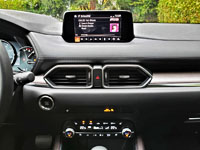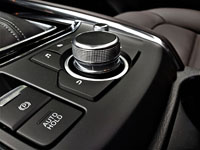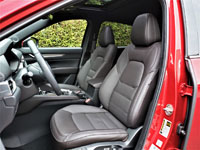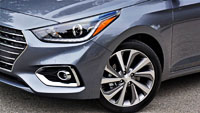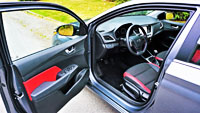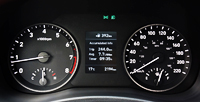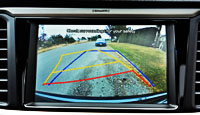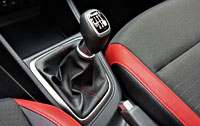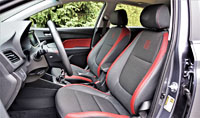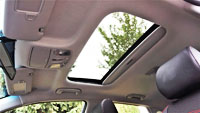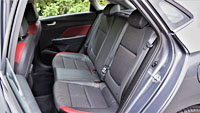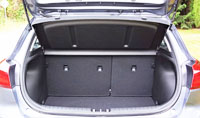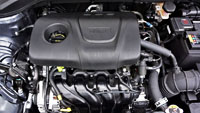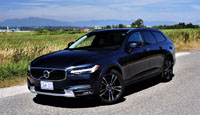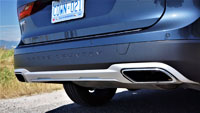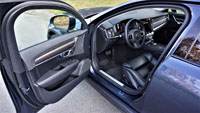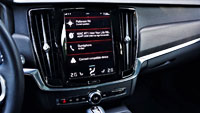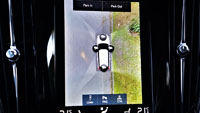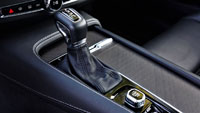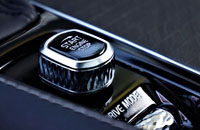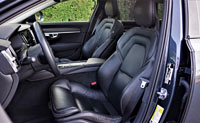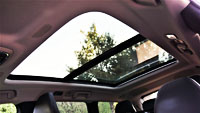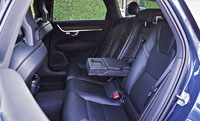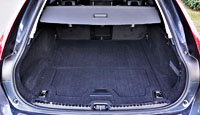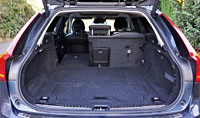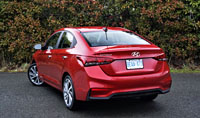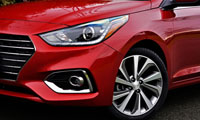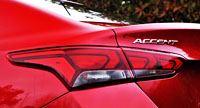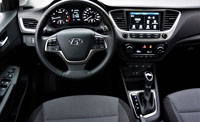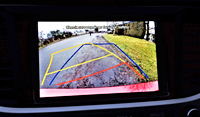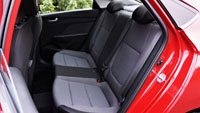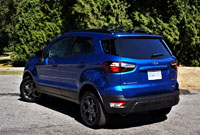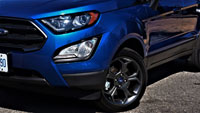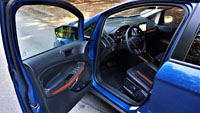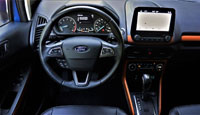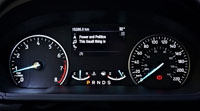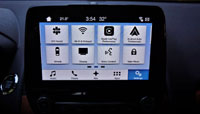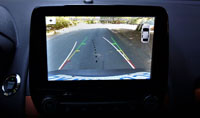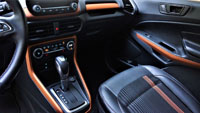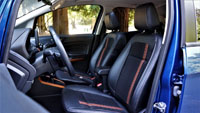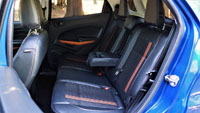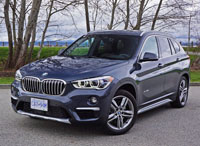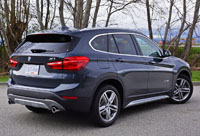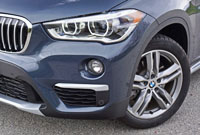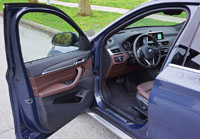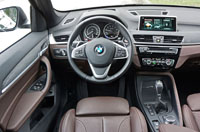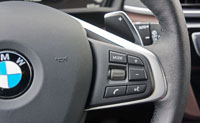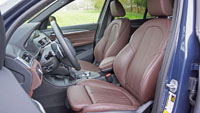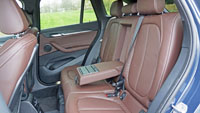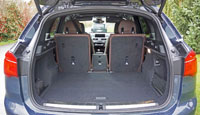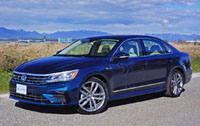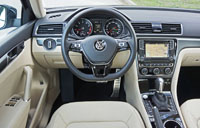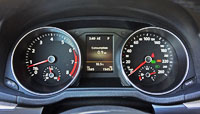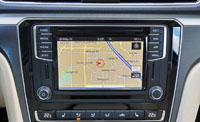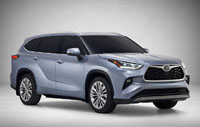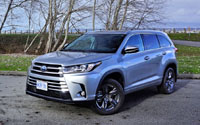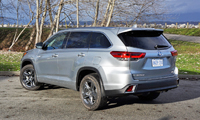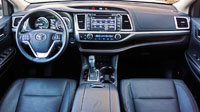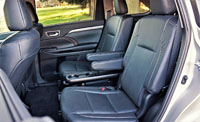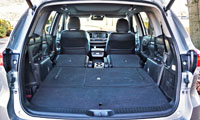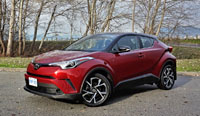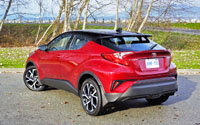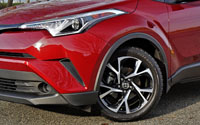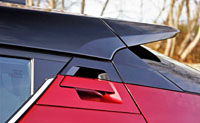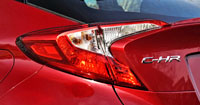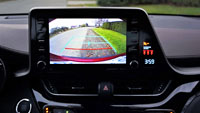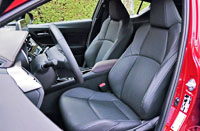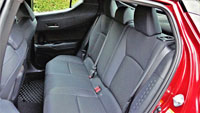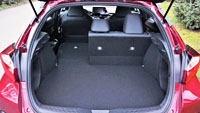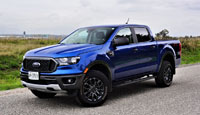
Exactly why Ford chose to offer this fabulous mid-size truck in nearly every other market than Canada and the U.S. for eight years before bringing it here is difficult to surmise, but rather than beat them up for handing their previous lead in this market segment off to competitors like Toyota’s Tacoma and General Motors’ Chevy Colorado and GMC Canyon, let’s celebrate that Dearborn’s decision makers finally came to their senses.
They’re not alone after all, the powers that be in Auburn Hills still waffling on whether or not to bring back the once class-leading Dakota (it was supposed to be here by now, but crickets). Maybe the final decision is stuck in Fiat’s Turin sede centrale or possibly les bonnes gens du Groupe PSA— Citroën, DS, Peugeot et Vauxhall-Opel—in Rueil-Malmaison), the leadership of semi-domestic automaker having been in regular flux, but either way the Ram Dakota seems to be a no-brainer, while on the other hand Nissan’s 16 year-old Frontier is an automotive zombie that should’ve mercifully been put down or replaced a decade ago.
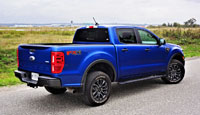
Despite Nissan trudging along in the mid-size pickup segment during all the years Ford escaped (the Frontier still sells better than Honda’s Ridgeline, which is a sad testament to its Japanese rival), the two automakers actually share similar short-term small truck histories. Two years after Ford killed its then 14-year old third-generation compact Ranger in its domestic market in 2012, and introduced the current third-gen T6 to international buyers in 2011, Nissan offered up a redesigned Navarro to international customers. That attractive model was good enough to serve as the base for Mercedes-Benz’s now-defunct X-Class pickup as well as Renault’s Alaskan (not to mention Dongfeng’s oddly named Rich 6), but for some reason Nissan’s North American operations couldn’t figure out a way to bring it here, and alas they’ve been marginalized out of contention.

Nissan and its Frontier don’t have anywhere near the name brand recognition, marketing clout, or dealership real estate to relaunch a new small truck, whereas Ford had unwittingly built up an army of ready and willing loyalists that quickly pushed the 2019 Ranger into high volume Canadian sales of 6,603 units, slotting into third place after the Tacoma that managed 12,536 deliveries throughout calendar year 2019, and the Colorado with 8,531 (when GM’s Chevy and GMC sales are combined it was number one with 14,067 units down the road last year. That’s pretty decent for its first year (and a partial-year at that), boding well for even greater future success.
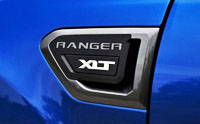
It also says a lot for the truck’s initial design. After all, it’s no spring chicken, having arrived on international markets nine years ago and only undergoing a refresh for last year’s introduction. Compare this to the full-size F-150, which probably gets more updates than any other model in Ford’s lineup, plus trim levels and special editions infinitum, and the Ranger’s initial showing on 2019’s sales charts is pretty impressive (although it has a long way to go before nudging the F-Series off its top pedestal that saw 145,210 examples delivered in 2019). Even both GM trucks couldn’t touch that (they totaled 94,683 units), just barely passing Ram’s 89,593-unit pickup total.
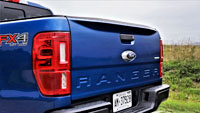
The new Ranger fits into the mid-size pickup truck segment ideally, being that it’s quite a bit larger than the old compact version and significantly smaller than the F-150. By the numbers, the 2020 F-150 SuperCab 4×4 with its 6.5-foot box is 536 mm (21.1 in) longer with 462 mm (18.2 in) more wheelbase, plus 167 mm (6.6 in) wider, and about 155 mm (6.1 in) taller than a similarly optioned 2020 Ranger SuperCab 4×4, whereas the F-150 SuperCrew is a whole lot bigger.
Specifically, the Ranger is 5,354 mm (210.8 in) long with a 3,221-mm (126.8-in) wheelbase, 1,862 mm (73.3 in) wide (without mirrors), and 1,806 or 1,816 mm (71.1 or 71.5 in) tall for the SuperCab or SuperCrew, which makes it slightly shorter than the aforementioned Tacoma (and much shorter than the long-wheelbase Toyota), while its also narrower and a smidge taller.
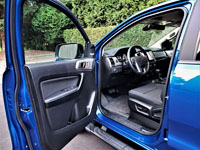
As noted, the Ranger received an international mid-cycle update for 2019, which included a new 2.3-litre turbocharged EcoBoost four-cylinder engine and a SelectShift 10-speed automatic transmission as standard equipment, good for 270 horsepower and 310 lb-ft of torque.
My tester was in XLT SuperCrew 4×4 trim and attractive Lightning Blue paint, which when combined with an available Sport Appearance package and FX4 Off-Road package, looked great, if not as ruggedly handsome as the Ranger Wildtrak if first saw in Asia, and the newer international-spec Ranger Raptor I’ve only seen in celluloid form (and hopefully here at some point in the near future).
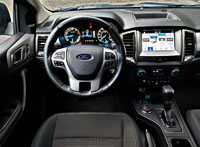
The domestic-market Sport Appearance package includes a darker grille surround and Magnetic-Painted (dark-grey) 17-inch alloys, as well as a leather-wrapped steering wheel and shifter. Power-folding side mirrors and an auto-dimming rearview mirror are included too, with the latter two also part of the 302A package, while a Bed Utility package adds a drop-in bedliner and 12-volt in-bed power adaptor, and the FX4 package provided my tester’s stylish red and grey/black decals to the rear corners of the box.
There’s quite a bit more to the FX4 package than two decals, like uniquely tuned off-road monotube shocks, tough 265/56 Hankook Dynapro AT-M tires, an electronically locking rear differential, Trail Control that allows you to set a given speed between 1 and 30 km/h to crawl over rugged terrain via throttle and brake management, and a Terrain Management System that, via Grass, Gravel/Snow, Mud/Ruts, or Sand settings, utilizes the Ranger’s many off-road technologies to lay waste to all types of trails, from light-duty to extreme. What’s more, the FX4 package features a steel front bash plate under the front bumper, and skid plates covering the electric power steering system, transfer case, and fuel tank. Finally, the FX4 package provides pitch, roll and steering angle monitoring from the driver’s seat.

Unlike some 4x4s, setting the Ranger’s high/low gearing ratios requires no tugging on secondary shift levers, but rather only needs the subtle twist of a rotating dial on the lower console next to the shift lever. When set to its most capable off-road setting, you shouldn’t have any problem overcoming all types of rocks, roots and what-have-you, thanks to 226 mm (8.9 inches) of ground clearance, plus approach and departure angles equalling 28.7 and 25.4 degrees. For reference, the Tacoma offers more ground clearance at 239 mm (9.4 in), while its approach/departure angles range from 29 or 32 degrees up front to 23 degrees in back.
The Ranger’s generous suspension travel provides a comfortable ride for a truck, and I must admit it felt quite good through high-speed corners too, within reason. Even better, the new Ranger’s powertrain is really fun to dig your right foot into, and the 10-speed gearbox (with more forward speeds than any competitor) was plenty smooth and quick shifting, even providing a rocker switch on the side of the shift knob for flicking through the gears manually.

If things are sounding sporty, that wasn’t by accident. Ford increases performance further via a Sport setting that allows the engine’s revs to rise higher between shifts, while the transmission even holds onto a given gear when the engine arrives at redline, welcomingly unusual.
Helping add to that sporty feeling through corners, plus improving at-the-limit safety, Ford utilizes Curve Control for detecting when a driver enters a curve too quickly, and then makes automatic adjustments to the Ranger’s speed by lowering engine torque, adding braking power, and increasing the stability control function.
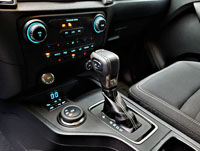
Along with that easy-going ride I spoke of a moment ago, my Ranger XLT 4×4 tester provided good comfort and sizeable cabin space from front to rear. The SuperCrew cab is the Ranger’s largest, and features regular front-hinged doors in back, plus additional rear legroom than the smaller base SuperCab model. Both configurations are available in XL and XLT trims, while the top-line Lariat is only offered as a SuperCrew.
The base SuperCab body style includes a longer six-foot bed, while my SuperCrew tester had a shorter five-foot bed. The Ranger is good for 707 kilos (1,560 lbs) of payload too, which is considerably better than the Tacoma’s 425- to 520-kg (937- to 1,146-lb) payload maximum. This same scenario plays out for towing capacity as well, with the Ranger capable of 7,500 lbs (3,402 kg) of trailer compared to the Toyota’s 502-kg (1,107-lb) rating. Trailer sway control is standard with the Ranger, too.
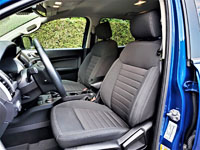
Without a trailer in tow, and being mindful of your right foot it’s possible to achieve a class-leading fuel economy rating of 11.8 L/100km in the city, 9.8 on the highway and 10.9 combined, this partially thanks to standard auto start-stop that shuts the engine off when it would otherwise be idling.
The base Ranger XL SuperCab starts at $32,159, by the way, plus freight and fees of course, which makes it $1,090 pricier than the same model last year, while the XLT SuperCab now starts at $36,529. The as-tested XLT SuperCrew sees an increase of $890 since last year for a new price of $38,329, while the top-line Lariat SuperCrew only goes up by $230 for a new price of $42,619.
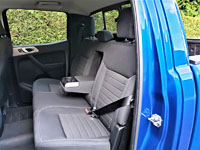
To learn about factory leasing and financing rates from 0.99 percent on 2020 Rangers and up to $4,000 in additional incentives for 2019 models, check out their respective CarCostCanada pricing pages, plus be sure to learn about all of CarCostCanada’s features before talking to your local Ford retailer. Along with financing and leasing rates, you can also find out about available manufacturer rebates, plus dealer invoice pricing that could save you thousands. Remember to download our free CarCostCanada app from the Google Play Store or the Apple Store too, allowing you to access all of this valuable info anytime and anywhere.
As for features, the 2020 Ranger Lariat adds more chrome detailing to the exterior, plus LED headlamps, front parking sensors (to the rear sensors already on the XLT), proximity-sensing entry, pushbutton start/stop, illuminated vanity mirrors, a universal remote, three-way heatable front seats with eight-way powered adjustment, leather upholstery, and more.
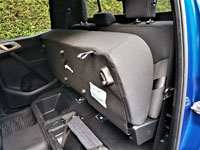
Yet unmentioned features on the XLT include 17-inch alloys (instead of the 16-inch steel wheels found on the base XL model), fog lamps, carpeting and carpeted floor mats (the base truck gets rubber flooring), a six-speaker stereo, automatic high beams, lane keep assist, plus more, while you can add a Technology package featuring a navigation system and adaptive cruise control.
Finally, the base XL includes auto on/off headlamps, a four-speaker audio system, a USB charging port, 4G LTE Wi-Fi, a capless fuel filler, and a pre-collision system that includes automatic emergency braking along with blind spot warning and rear cross-traffic alert.
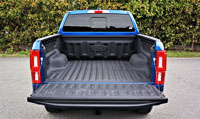
Although my Ranger XLT test model was only a mid-range offering, it was nicely finished inside and well-constructed. The seat and armrest upholstery was a nice woven black cloth with creamy-grey contrast stitching for a sporty effect, while interior trim included the usual assortment of brushed and bright metallic surfaces, but no padded soft-touch synthetics.
The front seats are comfortable, with the driver’s featuring two-way power lumbar support that fit the small of my back nicely, while I found my XLT’s driving position good due to plenty of reach from the tilt and telescopic steering column. The steering wheel gets a comfortably soft leather-wrapped rim, and all interior controls were within easy reach. s
The Ranger’s instrument cluster is mostly analogue with nicely backlit needles and indices, the former sporting an attractive aqua-blue colour for dramatic effect, while a full-colour, high-resolution 4.2-inch multi-information display is more advanced than the majority of Ford’s competitors.
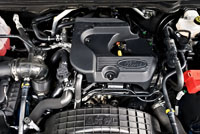
The just-noted gauge cluster needles match up with the sky-blue background of Ford’s 8.0-inch Sync 3 centre touchscreen nicely, this upgraded system coming standard in XLT and Lariat trims. While this system has been on the market for many years, it’s still a good-looking layout that works well. It even includes Apple CarPlay and Android Auto smartphone integration, plus loads of audio features including satellite radio and Bluetooth streaming, while my tester featured an accurate navigation system, as well as XM travel link, a dual-zone automatic climate control system, and a backup camera with active guidelines.
Looking rearward, my Ranger SuperCrew tester’s rear bench seat was plenty spacious and adequately comfortable, particularly in the outboard positions, but it didn’t include the types of features I expected to see, not even rear air vents. XLT and Lariat buyers can expect two USB-A charge ports on the backside of the front centre console, as well as a convenient 110-volt household-style power outlet.
The Ranger is devoid of those handy integrated bumper steps found on GM trucks, that are really useful for climbing up on the bed, but fortunately my test model featured a kick-down step from Ford’s accessories catalogue that worked very well.
All in all, I really like Ford’s new Ranger. It looks good and comes across as a rugged, well-made mid-size truck. Its cabin is roomy and comfortable, includes very good electronics, and it’s really fun to drive. Ford should start offering some higher priced trim levels to compete with the Tacoma’s Limited, for instance, not to mention bring us the aforementioned Ranger Raptor that could go head-to-head with the Tacoma TRD Pro and Colorado ZR2. Even now, however, the Ranger’s three trim levels offer a lot of variety with competitive pricing, and should do even better on the sales charts as would-be buyers learn about their availability.
Review and photos: Trevor Hofmann
Photo editing: Karen Tuggay

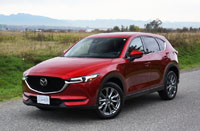


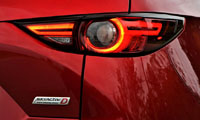
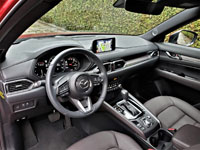
 To this end, the SkyActiv-D turbo-diesel suits an upwardly mobile brand like Mazda better than some others, being that diesels have long been the stuff of Mercedes-Benz, Audi, and BMW, plus more recently Jaguar and Land Rover. I’d be remiss not to mention Volkswagen again, because not too long ago oil burners made up more than half of their Canadian sales, but now all of the just-noted German brands are on a different trajectory, embracing plug-in electric mobility at a much greater development cost and no sure promise of profits (even mighty Tesla had never managed more than two sequential quarters of profits as of this review’s publication date).
To this end, the SkyActiv-D turbo-diesel suits an upwardly mobile brand like Mazda better than some others, being that diesels have long been the stuff of Mercedes-Benz, Audi, and BMW, plus more recently Jaguar and Land Rover. I’d be remiss not to mention Volkswagen again, because not too long ago oil burners made up more than half of their Canadian sales, but now all of the just-noted German brands are on a different trajectory, embracing plug-in electric mobility at a much greater development cost and no sure promise of profits (even mighty Tesla had never managed more than two sequential quarters of profits as of this review’s publication date).